From the Mountains to the Oceans: Twilight 2000‘s American Campaign, Part II
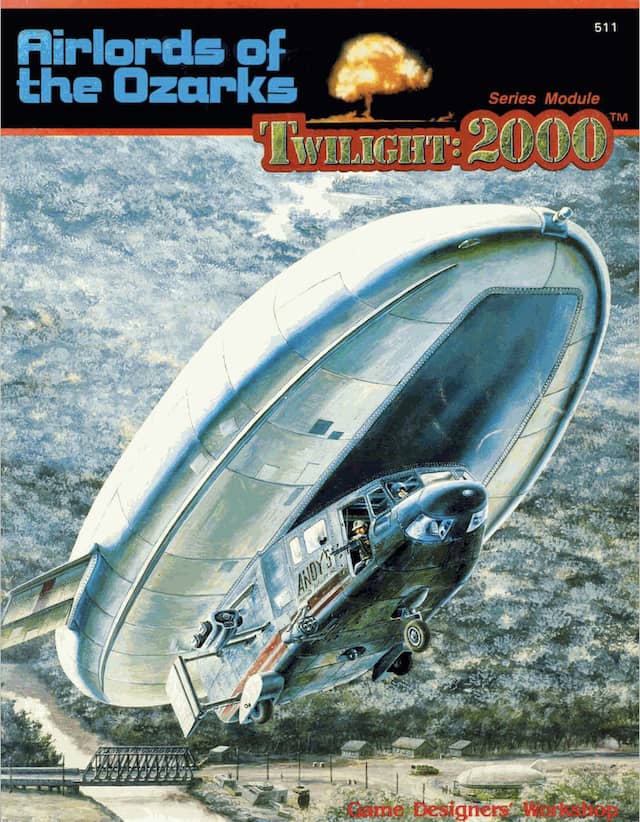
This is the second of three articles covering GDW’s published adventures in the “American Campaign” for Twilight: 2000’s first edition. The first, “Going Home Isn’t All It’s Cracked Up to Be,” can be read here.
For the characters at the start of their adventures in Twilight: 2000 — presuming they start with the default location in Poland — the situation in America is essentially unknown. They may learn more clearly that the United States government has split into competing units: the so-called MilGov and CivGov. However, the nature and extent of the collapse of society and the rising of powerful alternative forces would largely be unknowable.
The nuclear strikes against America overwhelmed governmental services either because they were taken out in the strikes (the main body of the federal government), the vast quantity of desperate refugees put civilian leaders in no-win situations for shelter and food, or the collapse of the intricate infrastructure of food production and delivery stripped civilian government of any authority as people turned to baser instincts for survival. Even the Roman emperors understood the importance of food supplies and ensured that the citizens of Rome had free supplies of bread.
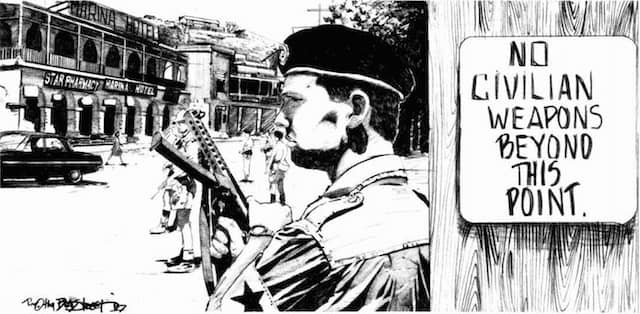
The next releases in the American series of adventures from GDW were Airlords of the Ozarks, Gateway to the Spanish Main, and Urban Guerilla. These adventures continue to explore the consequences of the World War III on the United States along with a diversion to Grenada. Like the first three, the use of “campaign” is more a convenience than an actual campaign in a traditional RPG sense — i.e., a series of linked adventures with the same characters. The locations are geographically separate by hundreds and even thousands of miles. In particular, Gateway to the Spanish Main presumes the players are returning home from Europe.
Airlords of the Ozarks finds the players investigating a rising force based in southwest Missouri and northwest Arkansas. This rugged landscape with its fiercely independent-minded populace did not suffer from the nuclear strikes, though the consequences of those strikes, the refugees, and the collapse of infrastructure devastated the civilian government. The primary adventure prompt is a report by a US soldier of a dirigible and supporting ultra light flying vehicles.
The Road Warrior (1981) distributed by Warner Brothers
No matter the player characters’ allegiances, both the CivGov and MilGov are interested in what’s going on. The adventure goes to some length to provide starting points that connect with the earlier adventures, Red Star/Lone Star, Armies of the Night, and Allegheny Uprising. However, they provide little in the ways of details about the journeys from those to the Ozarks area. Presumably the game master (GM) can “fast forward” those details or create the adventures that connect them.
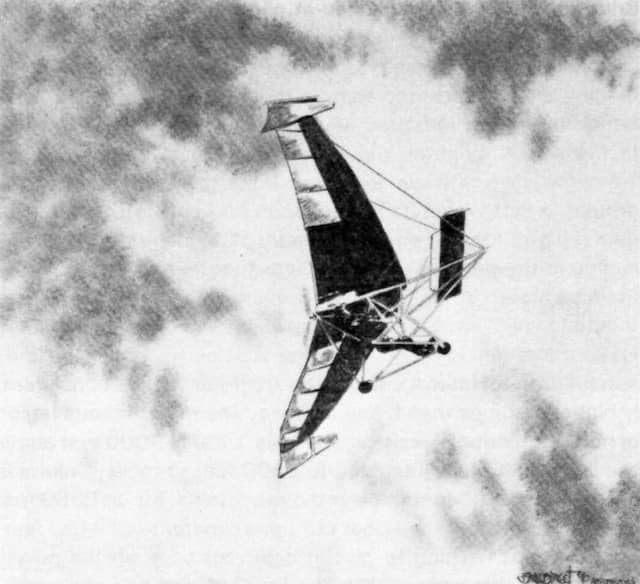
Regardless of how they get there, the presumption is that the players still have a stake in one of the competing governments — and can even be ordered to undertake the mission. The mission is straightforward: infiltrate the area and learn more about the group that is operating the dirigible and return with the intelligence. Oh, and several units have already been sent in and none have returned.
Like the other adventures in Twilight: 2000, these adventures are more sourcebook and background than explicit scenes. Heavily reliant on rumors and encounters as the players infiltrate the forests and mountains, how the players approach the mission and task is driven by them — though the adventure does take into account that they should not be going in heavily armed and limits the available resources to do so.
Additionally, the encounters often include hooks for side adventures. This one is even explicit about it:
An encounter with a rabid animal is either a very good excuse for the characters to interrupt their current adventure for a quick side trip to find a doctor and a stock of the vaccine, or a rather protracted and unpleasant way to end the career of an unwanted character.
The adventure begins with potential intrigue as well. The surviving soldier that witnessed the dirigible can be interviewed, and it’s worthwhile for the players to do so given the wealth of information he does have. However, one of the doctors is not what he seems. The players can discover this, which also accounts for how the other groups sent in did not make it back.
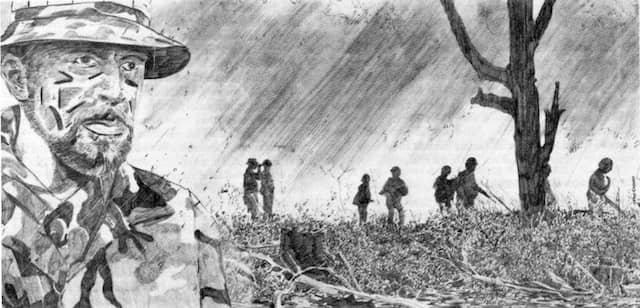
Who is this doctor working for? It’s a shadowy group with roots all the way back into the 70s and 80s: New America. New America figures prominently in all three of these adventures, and, frankly, while reading these I had to wonder what the creators saw in America in the mid-80s that gave them a level or prognostication.
New America is a far-right, fascist, racist organization that uses misconceptions of the United States’ founding and religion as an ideological bulwark. Founded by a Charles Hughes after failed attempts to enter politics, New America operated largely out of sight until World War III. With the nuclear strikes and collapse of basic services and governing institutions, New America executed its pre-war plans to establish itself. Caches of weapons and stockpiles of goods helped to ensure operational cells were able to arm and start to exert control.
Everything changed with the crash of a dirigible from Cincinnati in the Ozarks. The pilots and engineers aboard that dirigible, Columbia, were given a choice: Help New America fix the dirigible and build new ones or work in the slave camps. Some chose to help. Hence, New America became one of the few air powers in the world (recall, both aviation fuel and spare parts to keep complex flying machines in the air are in very short supply).
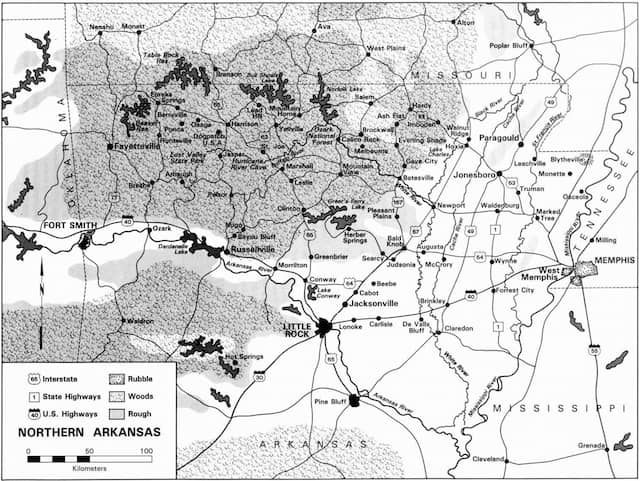
This newfound air power has been unleashed as a reign of terror in the Ozarks. Towns are ordered to provide ax“tithe” to New America and those refusing to do so are massacred by bomb-dropping ultralights and agents with guns on the ground. This reign of terror has produced results, in that many are surrendering.
This is what the players are walking into. If they do not discover that the doctor is an agent of New America, they will be compromised immediately, making their ability to secure intelligence and deliver it back challenging. The adventure provides several “successful” outcomes, which include as little as getting back with valuable intelligence to escaping with a dirigible, the Columbia pilots, and perhaps a high-ranking New American prisoner. That said, the adventure is stacked against the players achieving this level of success.
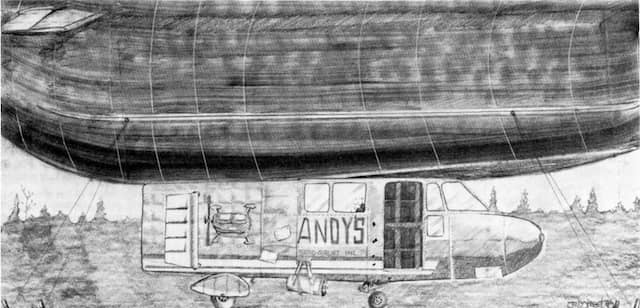
One major idea is that the players are likely to be captured and placed into one of the concentration camps that New America has set up for those they determine as undesirable and opponents. In practice, getting players to “surrender” and be captured is a dubious option in this GM’s experience. Players will do nearly anything to avoid capture — so this may require some finesse by the GM or ensuring the setup is so overwhelming to capture them that the players realize they have no option. If successful, a daring prison escape awaits.
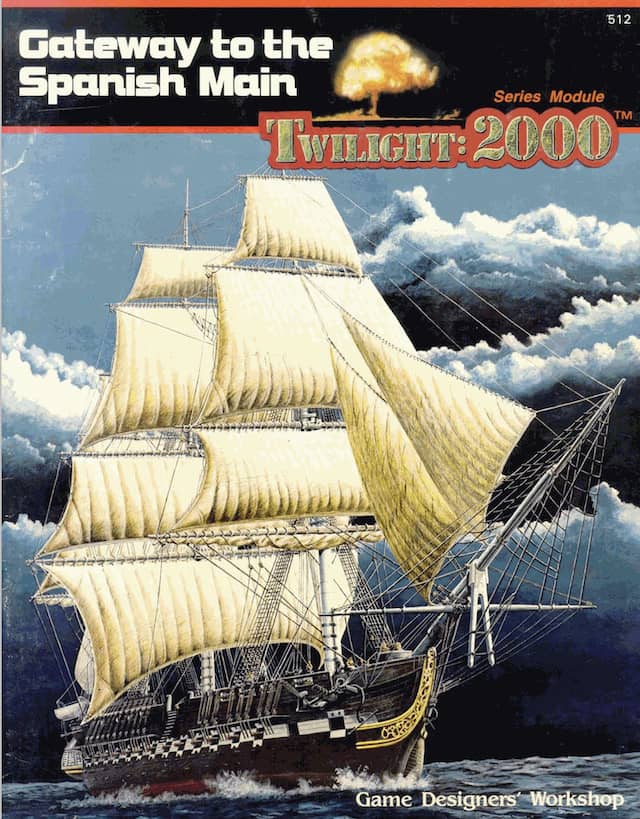
Gateway to the Spanish Main is set in the Caribbean, specifically, in the waters around and on the island of Grenada. When this adventure was published in 1987, Operation Urgent Fury — the 1983 invasion of that island by US military forces — was still fresh in the mind, particularly after Clint Eastwood’s Heartbreak Ridge released in 1986. Hence, the centering of this adventure there — with the inclusion of a marooned Cuban military force on Grenada — makes sense in its attachment to recent history.
The adventure itself revolves largely around the use of the USS Constitution — the one built for the film industry — by the players are crew members. The adventure provides a few ways the players could find themselves aboard the ship, but they are the weakest options for engaging with the adventure of any of the adventures thus far.
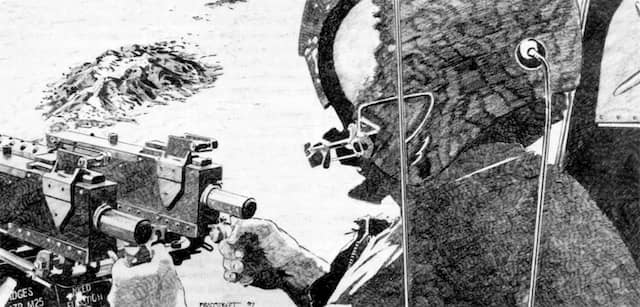
The players eventually encounter a couple of girls fending off a few pirates. This is the main driver of the events, which could include dealing with pirates, rescuing a kidnapped girl (one of the two fending of the pirates), and dealing with the Cubans who have occupied the hospital on Grenada. The girl, Loretta Ann Cummings, is the granddaughter of the Chairman of the Joint Chiefs of Staff and Commander in Chief of MilGov. Loretta, apparently, was sent to Grenada to protect her. This may have seemed like a good idea when this was written in 1987, but it is a bit preposterous. The entire adventure seems to lack much in the way of steam, though many of the characters — particularly the crew of the Constitution are “better” overall.
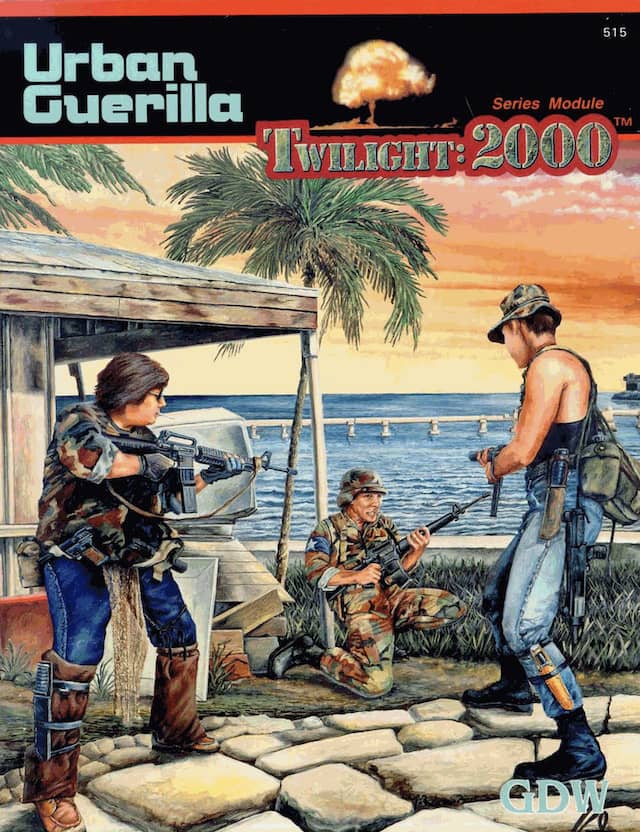
Urban Guerilla returns to the United States, specifically the Tampa Bay region, and another encounter with New America. In this case, New America has taken control of St. Petersburg, following a nuclear strike by the Soviets on MacDill Air Force Base in 1997. The nuke prematurely detonated and did not cause as widespread destruction as it could have. Nonetheless, the book provides some of the most detailed description of the effects of a nuclear explosion of any adventure supplement to date.
New America has been providing a semblance of “normalcy” to St. Petersburg, but unlike Airlords of the Ozarks, an loosely organized resistance is building — actually, resistances. Urban Guerrilla embeds a lot of conflict, quandaries, and complexity into its NPCs and factions. The New American’s are led by Angel Fitzleigh-Warren, the wife of a former judge who died the day before the nuclear strike. By force of will and, perhaps other deviousness, she had managed to lead New America to a position of significant power and influence. However, she is not liked by a few lesser leaders in the group or New America’s mysterious leader, Carl Hughes. They are all misogynistic and cannot stand to see a woman in charge, and she is not as doctrinaire as the group in the Ozarks. This does not make her a pleasant woman — she remains a villain, but it does keep her from being one-dimensional.
Fanya Wilkerson leads one of the primary resistance groups. Believing her son and husband perished in the blast, and daughter of a top New American military commander in St. Petersburg, she too is a complex character. The resistance is struggling with few members, unorganized with a few other groups, and relentless false flag operations by New America.
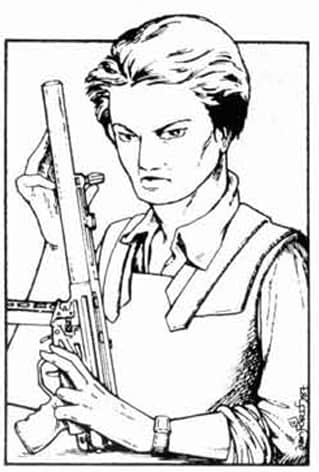
The players are asked to infiltrate the Tampa Bay area and gather intelligence on New American operations. While they are to retain a low profile, they are certainly going to become embroiled in the fighting. They could become guerrillas themselves, taking the fight to New America. They could join Wilkerson’s band or a few of the others — or unite them. The players could seek to undermine New American leadership itself by covertly joining the group and damaging it from within (an active plot to assassinate Angel is underway).
One of the best commanders, Joshua Armstrong, of New America is is black. Used by New America to show that they are not racist, he and all blacks are subject to racism. Appeals by the black community to Joshua to act against New America have to date been rejected, but the adventure makes clear, he’s near a tipping point. The players could find a way to English him.
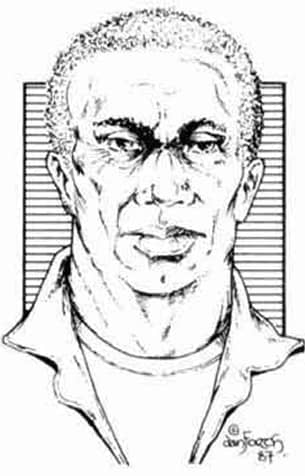
Finally, the Seminole nation has a tentative peace treaty with New America as they pursue their own ends. Everyone knows this is a temporary measure as each side consolidates its power, gathers material, and prepares to fight. The players could find a way to forger an alliance of resistance movements and the Seminole nation into an effective fight force against New America.
Of these three adventures, Urban Guerrilla is the best of the lot. With built in intrigue, complex factions, and a multitude of ways for the players to engage, I think it is the most fun to play at the table. Gateway to the Spanish Main is the least interesting, in the end, for it feels a bit like a dead end — unless it is used as a standalone, short campaign rather than part of an ongoing series of sessions.
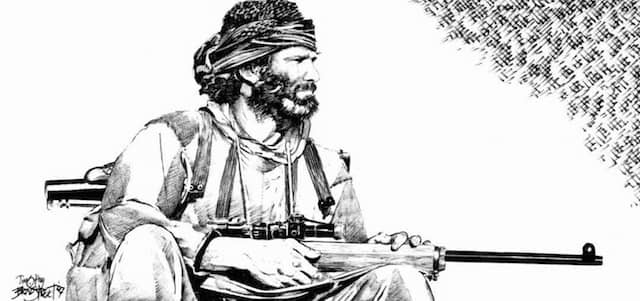
In all of these, the real enemy is New America and its fascist intent. Ruthlessly exerting power where it can, it serves as a worthy villain to the players. While they will not be able to topple the regime themselves (at least not in all locations), they can play a significant hand in resisting it and, in the end, ensuring it is a short-lived power.
You can pick up these adventures — in fact, all of Twilight: 2000’s sourcebooks, adventures, and rules for $35.00 from Far Future Enterprises.
Our previous coverage of GDW’s Twilight: 2000 includes:
Exploring Post-Apocalyptic Poland in Twilight: 2000
Twilight: 2000 — Roleplaying in a Post-Nuclear Holocaust World
Twilight: 2000‘s Polish Campaign, Part II
Twilight: 2000‘s Polish Campaign, Part II
Twilight: 2000‘s Polish Campaign: Part III
Going Home Isn’t All it’s Cracked Up to Be: Twilight: 2000’s American Campaign, Part I
From the Mountains to the Oceans: Twilight 2000‘s American Campaign, Part II
Reckoning: Twilight: 2000‘s American Campaign, Part III
Patrick Kanouse encountered Traveller and Star Frontiers in the early 1980s, which he then subjected his brother to many games of. Outside of RPGs, he is a fiction writer, avid tabletop roleplaying game master, and new convert to war gaming. His last post for Black Gate was Going Home Isn’t All That It’s Cracked Up to Be. You can follow him and his brother at Two Brothers Gaming as they play any number of RPGs. Twitter: @twobrothersgam8. Facebook: Two Brothers Gaming.
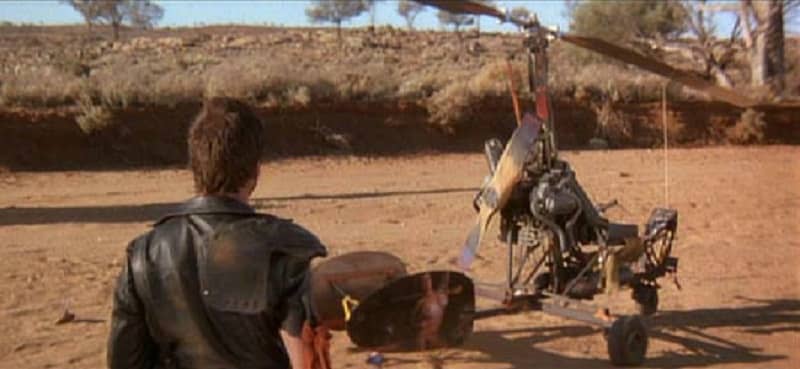
It is a shame that I never got to any of these adventures. Urban Guerrila sounds tense, involving, and full of (potential) twists and surprises. And what keeps the Airlords’ floating machines up in the air? I am guessing the gas bag is full of hydrogen, which is much easier to electrolysize than it is to isolate helium. Me, I would fly the ultralights, myself.
Eugene, thanks for reading! Yes, Urban Guerilla is really quite excellent with a lot of chances for mishaps, complications, and hero moments.
Airlords includes a crashed dirigible as part of the background info. This sparked New America’s plans and gave them access to a few experts who could electrolyze helium. Some of these experts refused to work with New America–and some did.